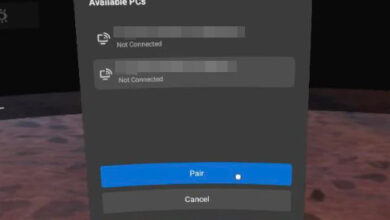Fix: SteamVR Error 308
Users experience the error message “Error 308” when their SteamVR application fails to start successfully. The full error message is “SteamVR wasn’t able to start because of unknown reasons. (Error: Unknown Error (308))”.

This error message can occur on the initial installation or when the application is in frequent use. There some rare cases where the error message occurs when the installation drive was either changed or the data was transferred to another location. Steam officials officially acknowledged the error released an update which only fixed some of the users’ issue.
What causes SteamVR Error 308?
Since SteamVR makes use of a lot of components on your computer as compared to the normal Steam, there are instances where some modules go in an error state and conflict which causes the error message. Here are some of the reasons why this might happen:
- Administrative privileges: SteamVR requires that you grant it elevated access when it runs. If it doesn’t get them, it fails to initialize.
- Launching wrong executable: There are instances where after a transfer of files, the shortcut/executable on your Desktop might not point to the correct installation files.
- Corrupt temporary files: SteamVR creates temporary files in a specific directory. If these files are corrupt, the application will fail to initialize.
- Process in error state: The Steam and Vice services might have gotten into an error state which affects the startup. Refreshing these processes usually fixes the problem.
Before you move on with the solutions, make sure that you are logged in as an administrator on your computer and have an active open internet connection without the use of proxies and VPNs.
Solution 1: Granting Elevated Access
All applications running on Windows require that you grant them elevated access so they can gain full control of the computer resources and use them to operate. If you have not granted elevated access to SteamVR, it will fail to initialize. Here we will navigate to the properties of the executable and grant it permissions.
- Navigate to the installation directory of SteamVR.
- Right-click on the application’s executable and select Properties.

- Once in Properties, select the Compatibility
- Now check the option “Run this program as an administrator”.

- Click Apply and exit. Restart your computer and try running SteamVR again.
Solution 2: Ending all SteamVR and Vice Processes
All applications have background services running which carry out all the tasks of it. There are some rare cases where the background processes go into an error state and fail to respond. These processes are mostly hidden from view so you might think you are restarting SteamVR but it never closed in the first place. In this solution, we will open the task manager and end all processes related to SteamVR and Vice.
- Press Windows + R, type “taskmgr” in the dialogue box and press Enter.
- Once in the task manager, select the tab of Processes.

- Now select all processes of SteamVR and Vice. Select them one by one, right-click on them and select End task.
- After finishing all the process, try launching SteamVR again and check if the error message is resolved.
Solution 3: Deleting Temporary files
Steam like all other applications, store temporary profile data in your computer’s directory. This will most probably different than other profiles on your computer. If any of these configuration files get corrupt or unusable, SteamVR will not be able to fetch the required information on startup and fail to launch. In this solution, we will navigate to Steam’s installation directory and delete the temporary files.
- Make sure that you Exit Steam properly using the task manager before proceeding.
- Press Windows + E and navigate to the following directory:
C:\Users\Strix\AppData\Local\openvr\openvrpaths.vrpath
If you are not able to see AppData folder on your computer, you need to enable hidden files. Select View from the top of your Windows Explorer and select Options > Change folder and search options.

Select the tab View and then check the option Show hidden files, folders and drives underneath the heading Hidden files and folders. Click Apply to save changes.

- Now right-click on openvr\openvrpaths.vrpath and select Delete.

- Restart your computer and launch the application again. Check if the issue is resolved.
Solution 4: Reinstalling SteamVR
If all the above methods don’t work and you are still unable to launch SteamVR on your computer successfully, it is possible that your installation files are corrupt or incomplete. This is a very common scenario and mostly occurs if you have shifted your data from one location to another. In this solution, we will uninstall SteamVR and then reinstall it. This will help clear bad installation data and fix our problem.
- Press Windows + R, type “appwiz.cpl” in the dialogue box and press Enter.
- Once in the application manager, search for SteamVR. Right-click on the application and select Uninstall. You can also navigate to the installation directory and run the uninstaller from there.

- Restart your computer. Now navigate to Steam’s official website and download the installation files for the application. Run the executable as an administrator and let the installation process finish.
- Restart your computer again and then launch SteamVR as an administrator. Check if the issue is resolved.





